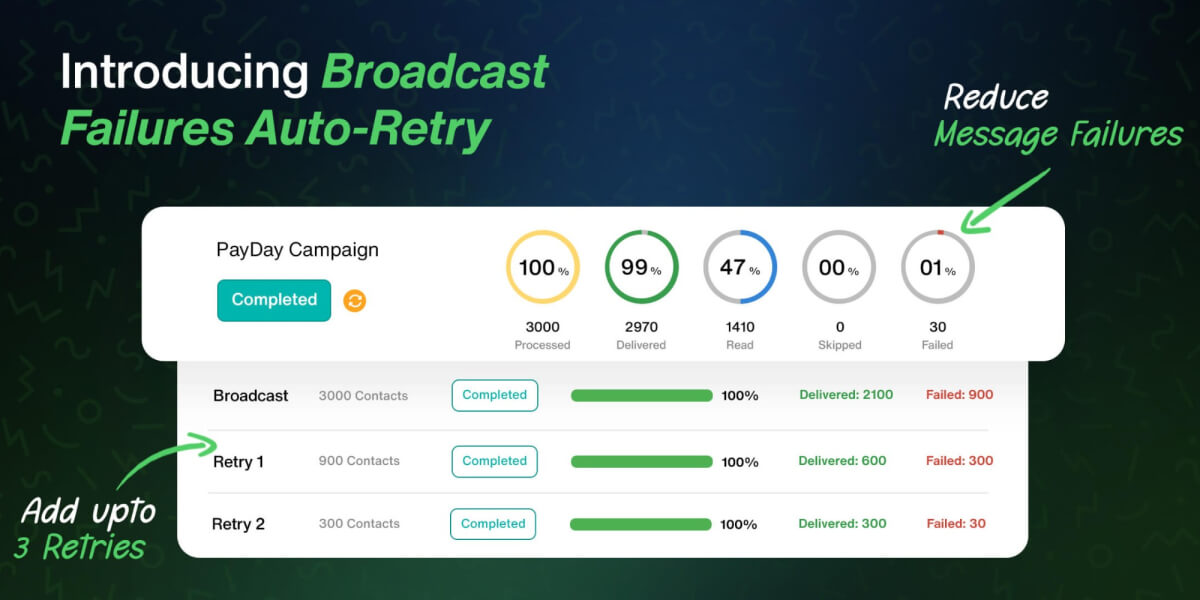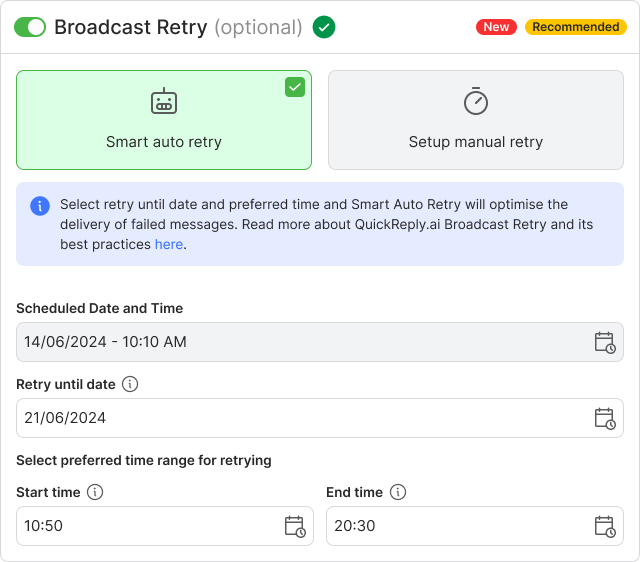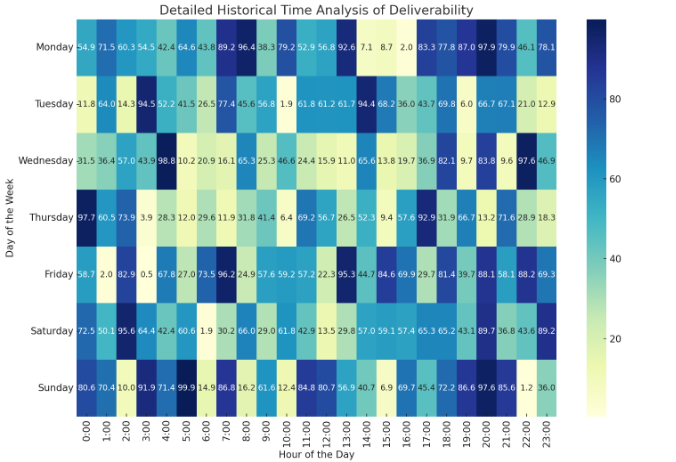New
Click-to-Instagram Direct Ads

Meta recently introduced frequency capping on WhatsApp to enhance the platform experience for users and reduce spam. Before this change, brands often overwhelmed users with excessive marketing messages. According to QuickReply.ai's analysis of over 600 customers, open rates on WhatsApp had dropped to 60%, a significant decrease from previous highs of 98%.
This over-messaging was not just annoying for users but also detrimental to brands, leading to broadcast message failure rates climbing as high as 90%. Brands found themselves in a challenging situation, with no effective way to manage this significant issue affecting the entire ecosystem.
Frequency capping is a user-centric feature introduced by Meta to improve the WhatsApp experience by controlling the number of marketing messages a user receives within a specified period. For example, following this update, a user might receive messages from only a certain number of brands (e.g., 20) within a rolling 7-day window. The specifics of this window are dynamically determined by Meta and are not disclosed to businesses to safeguard user experience.
This boundary is not static; Meta continuously adjusts it, encouraging businesses to craft their messaging strategies more thoughtfully and effectively. This adaptive approach requires brands to be strategic in their outreach, ensuring that each message is meaningful and aligned with user interests.
The introduction of Meta’s frequency capping presented a major hurdle for marketers. WhatsApp broadcasts had been a powerful tool for driving big numbers, especially during festive campaigns like Diwali, Holi, and other significant events. These campaigns relied heavily on timely and effective communication to boost sales and engagement.
Marketers now faced a twofold challenge: adhering to Meta's new regulations while ensuring their messages still reached their audience. The high failure rates meant that many campaigns were rendered ineffective, resulting in wasted time, effort, and resources. The frequency capping severely restricted the number of messages that could be sent, drastically reducing the reach of these campaigns.
Previously, during festive seasons, brands would bombard users with a multitude of offers and promotions to capitalize on the increased consumer spending. However, with the new limitations, these messages often failed to reach the intended recipients, causing a significant drop in engagement and sales. The festive campaigns, which were once a surefire way to boost revenues, were now falling apart.
Manual intervention to track and resend failed messages was not only tedious but also inefficient, leaving marketers in a constant struggle to maintain campaign effectiveness and ROI. The process involved identifying which messages had failed, manually resending them, and ensuring compliance with the frequency capping limits—all of which consumed valuable resources and time.
This situation demanded a solution that could automate the resend process, ensure compliance with Meta's regulations, and still maintain high engagement and delivery rates.
To address these pressing issues, we developed the Broadcast Auto-Retry feature. This innovative functionality is designed to automate the process of managing failed message deliveries, ensuring that your campaigns run smoothly and your messages reach their intended audience.

3. Post-Broadcast Retries: Add retries to completed broadcasts with failed contacts, ensuring no message is left behind. This feature maximizes the reach of your campaigns by giving every message multiple chances to be delivered.
4. Detailed Stats: Access comprehensive statistics for each retry, including "Delivered" and "Failed" messages. These insights help you understand the effectiveness of your retries and make data-driven adjustments.
5. Clone Support: When cloning a broadcast, all associated retries will be cloned as well, simplifying the campaign setup process. This feature saves time and ensures consistency across campaigns.
Quickreply.ai is excited to introduce the Smart Retry feature in its continuous effort to enhance your marketing campaigns. This advanced AI-driven tool ensures your broadcast messages reach their intended audience by intelligently managing retry attempts. Let's dive into how Smart Retry works and the benefits it brings to your campaigns.
Smart Retry leverages historical data and real-time analysis to optimize the timing of retry messages. Here’s a breakdown of the process:

The heatmap below shows the best times for message delivery, highlighting high deliverability periods throughout the week. By leveraging this data, Smart Retry identifies optimal windows, such as Thursday afternoons and Sunday mornings, to ensure your messages are sent when they are most likely to be successfully delivered.

Isaac Luxe, a leading brand in the health and wellness sector, faced high message failures in their WhatsApp broadcasts due to Meta’s frequency capping policies. By leveraging QuickReply.ai’s Broadcast Failures Auto-Retry feature, Isaac Luxe was able to recover approximately 50% of their initially failed messages. This significant improvement allowed them to deliver an additional 1,432 messages, enhancing their campaign effectiveness and customer engagement.
For a detailed account of how Isaac Luxe utilized this feature to overcome their messaging challenges, read the full case study here.
The introduction of Meta’s frequency capping presented a significant challenge, but with our Broadcast Auto-Retry feature, brands now have a powerful tool to overcome these limitations. This feature not only automates and optimizes message delivery but also enhances engagement and ROI, ensuring that your WhatsApp marketing campaigns are more effective than ever.
Start using the Broadcast Auto-Retry feature today and experience the difference it makes in your WhatsApp marketing campaigns. Let’s keep your messages reaching your audience and your ROI growing.
Tool and strategies modern teams need to help their companies grow.
Leverage the untapped growth potential of WhatsApp marketing to acquire and retain customers.